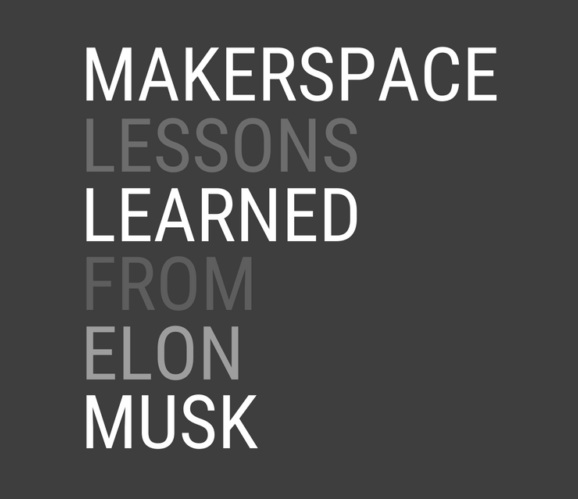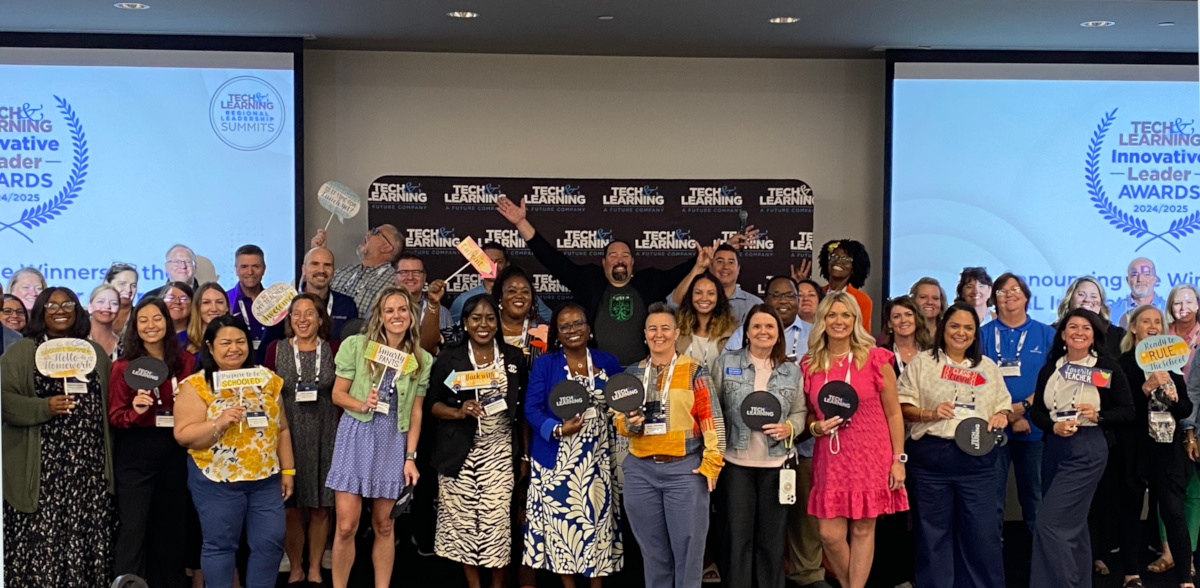Makerspace Lessons Learned from Elon Musk

As was most of the world, I was recently gripped by the events surrounding the Thailand Cave Rescue. Aside from the incredible rescue efforts to save the boys and coach from the Wild Boars soccer team, which thank goodness proved to be successful, I was also enthralled by the conversations surrounding engineering a solution to rescue the group from the flooded cave. Most compelling to me was the dialogue I saw unfold on social media between Elon Musk and the wider world. Despite the noise on social media, Mr. Musk is incredibly transparent in his conversations, allowing us all to learn, grow and even participate and contribute. I admire his willingness to consider critical feedback offered by those who have valuable ideas and suggestions. The discourse surrounding the cave rescue began with such comments such as:
Maybe worth trying: insert a 1m diameter nylon tube (or shorter set of tubes for most difficult sections) through cave network & inflate with air like a bouncy castle. Should create an air tunnel underwater against cave roof & auto-conform to odd shapes like the 70cm hole.July 6, 2018
From there, the conversations continued to progress into ulitimately the idea of a tiny, kid-sized submarine was revealed.
Got more great feedback from Thailand. Primary path is basically a tiny, kid-size submarine using the liquid oxygen transfer tube of Falcon rocket as hull. Light enough to be carried by 2 divers, small enough to get through narrow gaps. Extremely robust.July 7, 2018
I’m in LA working with the SpaceX team building the kid mini-subJuly 7, 2018
On social media, Mr. Musk gave us a glimpse, not only into the design of this submarine, but into the testing of it as well. The sub was not needed in Thailand, afterall, but showed great potential for being useful in future situations. He is also listening to feedback on how to improve the design for future applications.
Glad to hear that. Engineering team also getting feedback from the British dive team on how to improve the design for future applications.July 12, 2018
Yes, Mr. Musk is a saavy businessman, but first and foremost, he is a brilliantly talented engineer with a penchant for making this world a better place. As an educator, particularly one who is quite invested in the maker movement, I was captured by his conversations and transparency. Of course there are countless lessons the education community can learn from Mr. Musk and his work, but Mr. Musk's involvement with the events in Thailand, made me think specifically about what we could learn from his approach to design.
Design Thinking is a process that has been widely adopted in education. Variations of this process exist, but ultimately, the approaches to it are fundamentally the same. For the sake of this post, Design Thinking can be briefly defined as a mindset and approach to learning, collaboration, and problem solving. I have always been uncomfortable with the way Design Thinking has been applied in education, because ultimately, especially from my makerspace perspective, I want to see students taking ownership over the design process. (In my second book, I offer suggestions on how educators can support students in being able to do so.)
Design Thinking is a human-centered approach to design, and empathy is especially important in the first stage of any Design Thinking process. Although we do not necessarly know the exact approach to designing that kid-sized sub was, I would assume that in the case of Mr. Musk, that empathy was what drove his desire to design a solution to help those children and their coach.
[6 GREAT Makerspace Practices That You Need to See]
Tools and ideas to transform education. Sign up below.
In my quest to learn more, I began to research heavily Mr. Musk's approach to design. Although there certainly are aspects of Mr. Musk's approach to design that explify features of Design Thinking, in all of my research, I saw no direct connection of Mr. Musk to Design Thinking. I am eager to share what I learned about his approach, along with other lessons I learned, with the hopes that we can all apply his thinking to our makerspaces so that our students approach to design will mature and grow. The lessons I learned are as follows:
1) First Principles: While many maker educators and their students use the process of Design Thinking to identify problems and generate/design solutions, Mr. Musk has spoken often about how he approaches his thinking from a physics framework, called 'First Principles'. First Principles is a cycle of breaking a situation down into the core pieces and then putting them all back together in a more effective way. This framework, which involves actively questioning everything you think you already know about a problem, is essentially a way of thinking that allows you to identify problems and design solutions from a different angle. Whille this way of thinking might seem counterintuitive, it can drive innovation and cause you to make potentially better decisions. It is one of the most effective strategies you can employ for breaking down complicated problems and generating original solutions. While many assume that our thinking needs to get more complex when designing solutions to problems, First Principles actually require that you go one or two levels deeper than most people. Mr. Musk himself has broken down using First Principle thinking into three steps:
STEP 1: Identify and define your current assumptions.
STEP 2: Breakdown the problem into its fundamental principles.
STEP 3: Create new solutions from scratch.
I personally only know of a handful of educators that are even familiar with what this means, however, I think all maker educators need to have at least some familiarity and understanding of First Principles. Perhaps this problem solving approach won't replace Design Thinking in education, however, it does offer another way of thinking and for designing solutions to problems, that our students are sure to benefit from, and should have some familiarity with.
For more on Mr. Musk's approach to First Principle thinking, I suggest watching this interview with TED Curator, Chris Anderson.
2) Failure: Let's face it. Mr. Musk works with rockets, and more goes wrong with rockets than goes right, so he knows a thing or two about failure. With failure now being seen in education as essential to learning, many maker educators have embraced failure in their makerspaces, encouraging their students to focus not on the product, but the process. Mr. Musk has famously said,
"Given the options, I prefer to learn from success".
I do feel that sometimes in education, the failure pendulum has swung to far away from the idea of achieving success. Mr. Musk has experienced failures of disproportionate size, and how demonstrated that failure is not a stigma, however, also has demonstrated that we should not just stop at failure, and ultimately aim for success, or at least to fail successfully. As maker educators, we need to emphasize to our students that design is messy and that failure along the way should almost be anticipated. At the same time, we need to coach our students through those failures, get behind them, and work hard at helping them achieve that success.
3) Design Drivers: In a podcast I recently listened to, Mr. Musk spoke about the idea of purpose driven design, or usefullness optimization, which he explained is essentially is driven by asking yourself one question:
Is what I am doing as useful as it can be?
He also emphasized how when designing for functionality, however, aesthetic design should not be overlooked, and how important it is to pay attention to nuances, details of design, shape and fuction and train yourself to look closely and carefully at these things. Oftentimes these are things that are in our subconscious, so as maker educators, we can help our students pull those things out of their subconscious into their conscious thoughts. The more we do this, this will become a habit in our students, and a new way of thinking that will only help them through the design process.
4) Future Predictions:
One of the phases of my makerspace planning process suggests connecting makerspaces to global trends and best practices. This means what is happening in the world today, as well as where it is predicted the world will go. Mr. Musk is often asked about his future predictions, some of which are briefly summarized:
- Computing: both the cost, as well as the ubiquity of computing, specifically AI applications growing exponentially
- Transportation: most vehicles produced will be electric
- Energy: most energy being produced will be sustainable, particularly solar
- Interplanetary Living: creation of a 'city' or a base on Mars
- Cyborg Activity: brain/computer interfaces
I encourage you to share these future predictions with your students and find ways to make connections to them in your makerspace, helping to give your makerspace relevance and sustainability.
How will you apply First Principles thinking, as well as the other lessons I learned from Mr. Musk, to your makerspace? As we head into another new school year, I encourage you to bring these lessons learned from Mr. Musk back to your own makerspaces for your students to learn and grow from. Be sure to share your stories at #worldsofmaking.
cross posted at worlds-of-learning.com
Laura Fleming has been a classroom teacher and media specialist in grades K-8 and currently is a Library Media Specialist for grades 9-12. She is a well known writer, speaker and consultant on next-generation teaching methods and tools, and the author of the best-selling Worlds of Learning: Best Practices for Establishing a Makerspace for Your School
